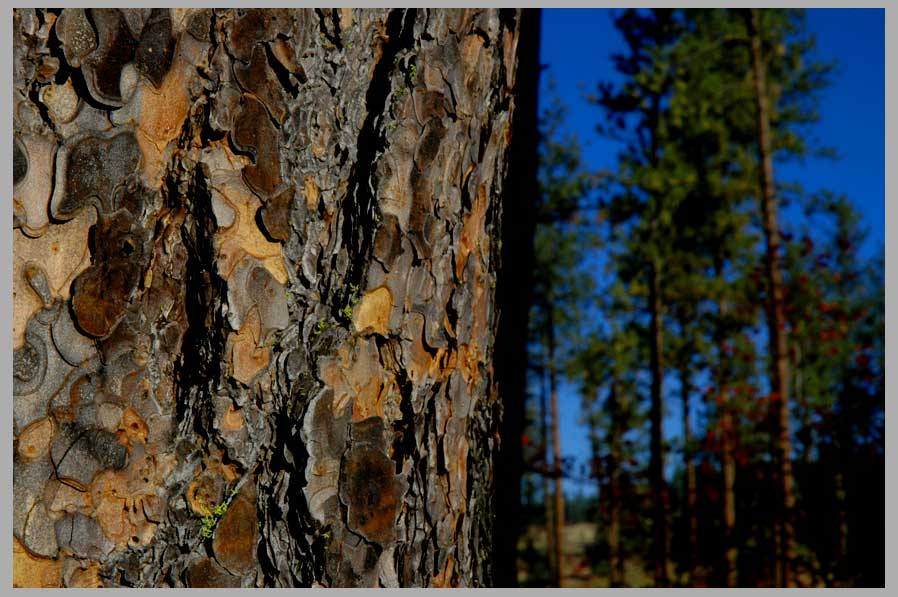On the Protection Provided by Trees (I)
Unlike the European Alps, in which the environmental
factors of high altitude, cold and snow limit the growth of
coniferous trees and forests, in the mountains of the Northwest
an additional factor plays a key role at lower elevations—
namely, drought. For these larger trees, the lack of reliable
yearly amounts of precipitation is just as severely limiting
as a deep snowpack that lingers well into the summer months.
Accordingly, I've come to see the forests of firs, spruces
and pines not so much as a static mass of green, but rather
as a kind of dynamic, living movement. The movement is
suspended between these the two limiting extremes of altitude
and drought. With different amounts of snowfall and rain,
the forest will respond by moving up or down the mountain,
and expanding or contracting into or away from the dry plains
and arid canyonlands.
In the middle of this movement stands the Ponderosa Pine.
It is the yellow-green ribbon of the rainbow's spectrum, the
middle C of music's frequency scale, the strong, stable triangle
between geometry's circle and square. Where the ponderosa
forms large stands, it takes the happy middle ground between
the colder, more moist preferred habitats of Douglas Fir, and
the little rain and searing summer heat endured by Juniper
and Sage.
One must have an ear for roots to hear consciously the
adjectives, 'massive' or 'ponderous' in the name. And one
must have more than a keen sense of forest history to imagine
the prodigious giants lost to bandsaws and trains. Trains?
Yes, in Northeastern Oregon, whole tracks were built to carry
them away. In the North Wallowas, already by 1926 few of the
grand old ponderosas were left, and the tracks constructed for
their wholesale plunder from Minam to Enterprise are now but
a footnote for Sunday tourists. And as with all natural destruction,
who is there left with direct, first-hand experience to write clearly
or teach children about the grandeur that has been lost?
I frequently remind myself, "If one wants to know the ponderosa,
go to the ponderosa." And sacred ground it is. No better place to
camp. No better place to build a home. And no better place to
discover a new creative spirit which takes as its epithet not 'man
the destoyer,' but man the great generator of new habitats for the
whole of the web of life.

